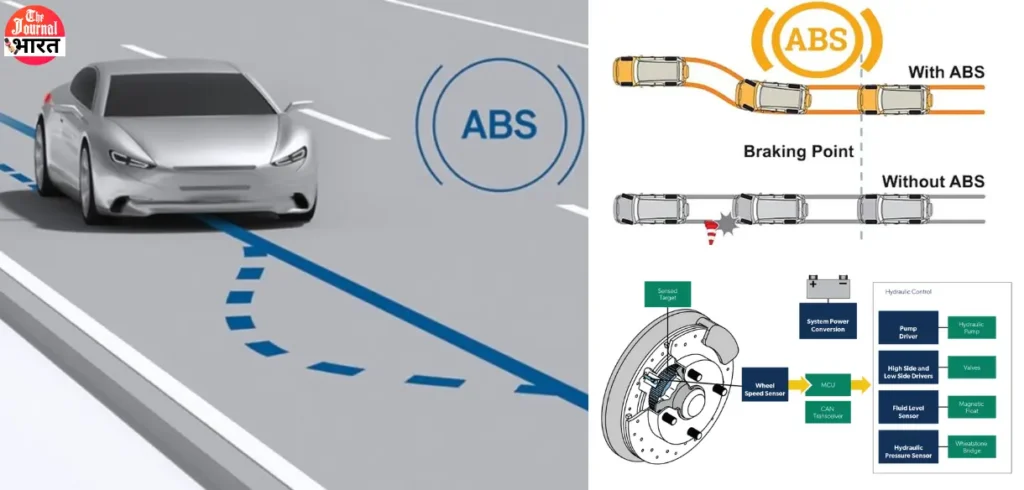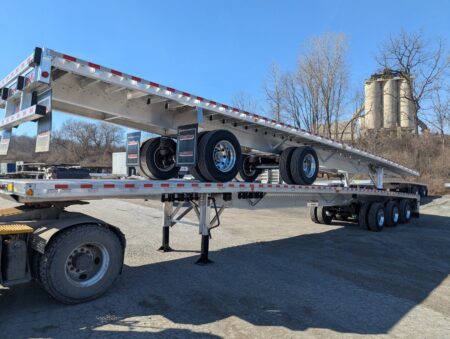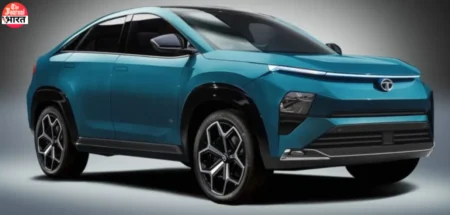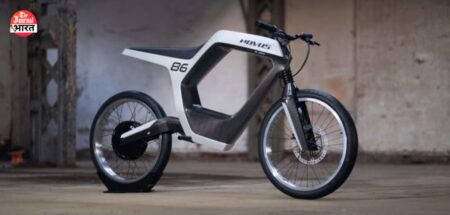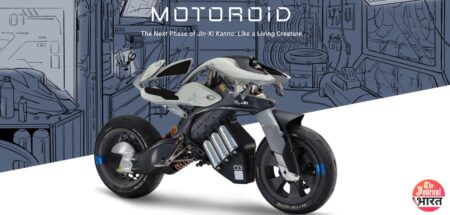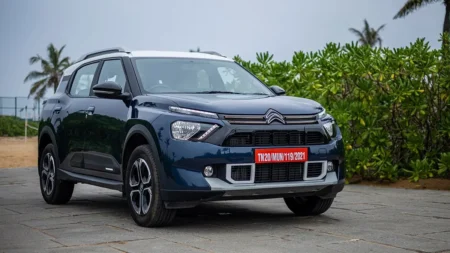Addressing Common Issues and Ensuring Optimal Performance
Anti-lock brake systems (ABS) have revolutionised road safety since their introduction in the 1970s. These systems prevent wheels from locking up and skidding during sudden braking, ensuring better vehicle control and stability, especially on slippery surfaces. ABS works by pumping the brakes automatically when it identifies that the tyre is about to lock up in case of emergency braking. ABS has significantly reduced the number of road accidents and fatalities.
Main Focus – Issue Identification
The ABS warning light, often a symbol with an exclamation point enclosed in a circle, indicates a potential issue with the ABS system. If this light illuminates, it’s crucial to address the underlying problem promptly to maintain optimal braking performance.
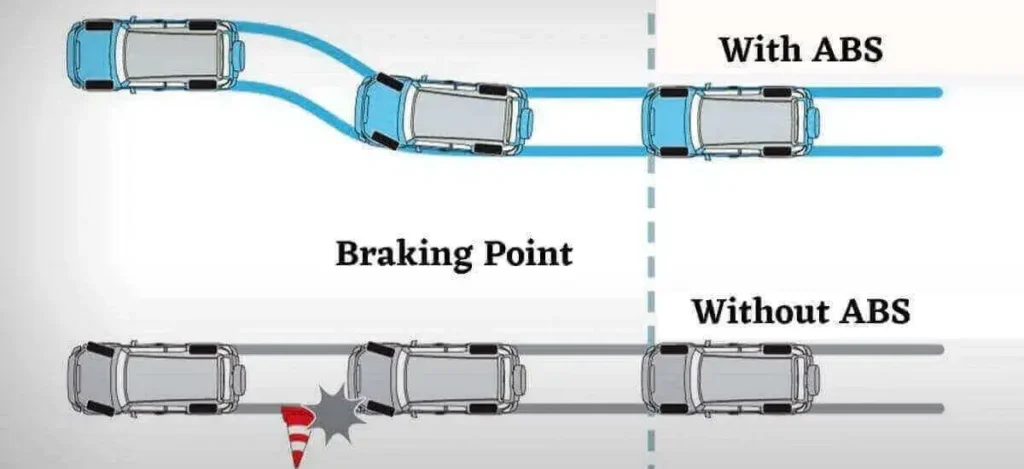
What does abs mean in car? Importance and Functionality
Anti-lock Brake System (ABS) plays a vital role in enhancing vehicle control and preventing skidding during emergency braking situations. By preventing wheel lockup, ABS allows drivers to maintain steering control and manoeuvre the vehicle safely, even on slippery or uneven surfaces.
Technical Explanation
ABS comprises four primary components: speed sensors, wheel valves, a hydraulic control unit, and a controller. Speed sensors monitor wheel rotation, and the controller analyses this data to determine if any wheels are about to lock up. If so, the controller signals the hydraulic control unit to modulate brake pressure to each wheel, preventing them from locking and regaining traction.

Types of ABS Systems
There are different kind of Anti-lock Brake System (ABS) systems which are installed in cars across the market, they are:

- Four-Channel ABS: In this the system used individual speed sensors for all four wheels of the car and there are four valves to independently control pressure on each wheel.
- Three-Channel ABS: This system used three channel controls on the braking of the vehicle. In this one channel controls the working of rear wheels and the other two works independently on the two front wheels.
- One- Channel ABS: It is basically used in small vehicles or motorcycles. This type of channel uses a single sensor to monitor the speed of the wheel and a single valve is present to control the brake pressure for all the wheels.
- ESC (Electronic Stability Control): This is the advanced form of ABS systems which uses various sensors to detect the movements of the vehicle and applies brakes to individual wheels which helps the driver control the vehicle in case of emergencies and never loses control over their vehicle.
Know More: Top 10 Fastest Car in the World
Components of Anti-lock Brake System (ABS)
The Anti-lock Brake System (ABS) system is compiled by using various components in the car which make it work properly. The components are mentioned below:
- Speed Sensors: The speed sensors are fitted on each wheel of the car so that it can monitor the speed of each wheel.
- HCU (Hydraulic Control Unit): It is one of the main components of the ABS system in the car as it controls the pressure of the brake fluid and consists of valves and pumps.
- ECU (Electronic Control Unit): It is considered as the brain of the ABS system, ECU is the connecting link between the above two components it receives the data from the speed sensors and sends signals to the HCU to regulate the pressure on the brake fluids.
- Brake Pads: This component is responsible for stopping the car by applying pressure on the rotors after the application of brakes.
How does ABS Work?
The working mechanism of ABS is explained below:
Whenever sudden brakes are applied in the car then the speed sensors of the wheels detect deceleration. Then if the sensors detect that one or more wheels are about to lock up then it sends signal to HCU to reduce the pressure on brake fluids on that particular wheel, this is known as modulating the brake pressure.
Then the HCU sends signal to the ECU to control pressure on the brake fluids of the car, in turn ECU sends signal to HCU to release and reapply the brakes. And the car’s ABS system continues with this process until the car stops or the brakes are released by the driver himself.
Read More: Top 10 Highest Selling Cars in India
Pros of ABS System in a Vehicle
There are numerous benefits of Anti-lock Brake System (ABS) systems in a car. Few of them are mentioned below:
- Improved Control: The use of ABS and its proper maintenance results in better control on the car as it prevents the situation of locking up of the wheels in case of emergency braking and allows the driver to steer the vehicle to the desired direction with better grip on the car.
- Prevents Skidding: ABS system prevents the locking up of tyres when the car is on high speed and sudden brakes are applied to stop the car. In this case the vehicle can skid if the tyres are locked because of brakes. The ABS never allows tyres to get locked thus it is prevented from skidding.
- Shorter Halting Distance: The stopping distance of the car is shortened because of the ABS system as it doesn’t allow the tyres to lock up and allows the driver to apply brakes with full pressure without any fear of losing control of the vehicle.
- Reduced wear and tear in the vehicle: There is lesser wear and tear of the wheels as ABS never allows the wheels to lock up and skid in case of sudden braking.
- Safety is increased: ABS system provides better controls over the vehicles even in situations of emergency brake application and driver doesn’t lose control over the vehicles which prevents accidents unlike the drum brakes which were used before. Thus, it can be stated that ABS systems increase safety of the vehicle as well as the people travelling in it by preventing skidding and spinning.
Read More: Top 10 Fastest Electric Scooters in the World
Cons of ABS System
Wherever there are pros of something it is obvious that there will always be cons, both come hand in hand. Thus the cons of ABS system are:
- Increase in cost: ABS increases the overall cost of the vehicle as ABS is at times optional and its installation as well as maintenance can prove to be a bit expensive.
- Complex System: There are possibilities that the ABS system can sometimes fail or result in malfunction as it includes so many components and there can be unexpected failures sometimes. But this happens only if it is not maintained properly.
Troubleshooting and Common Issues

Several factors can contribute to ABS malfunctions, including:
- Wheel speed sensor issues: Debris, corrosion, or damage to wheel speed sensors can disrupt their ability to accurately monitor wheel rotation, leading to ABS malfunctions.
- Hydraulic control unit problems: Faults in the hydraulic control unit, which regulates brake pressure modulation, can hinder ABS operation.
- Electrical system glitches: Electrical issues, such as blown fuses or damaged wiring, can disrupt communication between ABS components, causing malfunctions.
Read More: Top 5 Highest Selling Electric Scooters In India
DIY Checks or Simple Fixes
While some Anti-lock Brake System (ABS) issues require professional attention, users can perform simple checks to identify potential problems:
- Visual inspection: Check for visible signs of damage to ABS components, such as cracked sensors or loose wiring.
- Brake fluid level: Ensure brake fluid levels are within the recommended range. Low brake fluid can trigger ABS warning lights.
- Fuse check: Inspect the ABS fuse for signs of damage or corrosion. Replace the fuse if necessary.
Professional Intervention and Tools
For more complex ABS issues, professional assistance is recommended. Qualified technicians have the expertise and tools to diagnose and repair ABS malfunctions. These tools include:
- Scan tools: Specialized tools to retrieve diagnostic trouble codes (DTCs) from the ABS controller, indicating the source of the problem.
- Multimeters: Electrical testing tools to assess the integrity of wiring and electrical components.
- Oscilloscope: A tool to observe and analyze electrical signals, aiding in the diagnosis of sensor or control unit issues.
Safety and Precautions

When troubleshooting or working on ABS components, always follow safety precautions:
- Wear protective gear: Use safety glasses, gloves, and appropriate footwear to protect yourself from potential hazards.
- Secure the vehicle: Park the vehicle on a level surface and engage the parking brake to prevent accidental movement.
- Consult professional guidance: If unsure about any repair procedures, seek guidance from a qualified mechanic to avoid further complications.
Read More: Top 20 Electric Vehicle Manufacturing Companies in India
Conclusion and Additional Resources
Anti-lock Brake System (ABS) plays a crucial role in enhancing road safety and vehicle control. By understanding the common issues that can affect ABS and following the recommended troubleshooting steps, drivers can maintain optimal braking performance and reduce the risk of accidents. For more in-depth information on ABS, consult the vehicle’s owner’s manual or refer to reliable automotive repair resources.
For Know More About Anti-lock Brake System (ABS), You can Explore Wikipedia.
Read More: Top 10 Self Balancing Bikes and Scooters
FAQs
1. Is ABS a good feature or bad feature in a car?
ABS is a good safety feature for vehicles as it reduces the chances of accidents by providing better control and stability to the vehicle on any surface in case of emergency braking also.
2. Is ABS present in all the cars?
Yes, now all the cars are fitted with ABS after the modulation in rules by the government. It was made a standard feature in all the cars which were sold in the market after 1st April; 2019.
3. Will it prove to be safe to drive a car with its ABS sensor on?
The brakes work fine even in case the ABS sensor light is showing some malfunctioning in the car’s ABS. But it can at times result in locking up of tyres which can result in accidents. Thus it is recommended that the owner maintain the ABS system properly by taking good care of their vehicle.
4. Can ABS in cars be turned off manually?
Yes, in some cars there is a button to switch your car to normal brakes or ABS. But it is not recommended to do so because such actions can result in major accidents at times.
5. Can ABS be fitted in cars which are not fitted with ABS?
No, it is not possible to fit an ABS system in a car which doesn’t come with a standard ABS system already.
6. Does ABS in cars lower the insurance price of the car?
No, it does not reduce the vehicle’s insurance price at all, rather it depends on the car’s manufacturing year, model, and other factors like exterior maintenance of the vehicle.
7. Does ABS reduce the braking distance of the car?
The answer depends on the road surface. The ABS system can pump the brakes faster as compared to normal brakes and stop the car at smaller distances if compared to the normal braking distance.
4-wheel ABS works slowly on slippery surfaces like snow packed roads or ice on the road and increases the stopping distance of the car.
8. Is pumping still recommended when ABS is installed in the car?
No, pumping is not recommended in case of the cars which are fitted with ABS system as it works best when the brakes are held firmly as it allows the ABS to work as it works in case of emergency braking.




